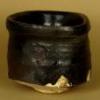Please read Nakahara's book in which he goes into quite some detail about what makes a sword good. There are others as well.
In a nutshell:
First is shape. Is it balanced, pleasing, even, etc.? Appropriate to the period, smith, school?
Next is the jitetsu: is it well forged, without flaws, even, clear, deep? What color is the steel? Deep blue/purple is considered best. Black, etc., second rate. Is there ji-nie, chikei, etc.? Are they uniform, consistent?
Then there is the hamon. The biggest concern is the habuchi. Is it even in thickness, clarity and brightness throughout? Are the nie even in shape and size (they should be)? Is the hamon pattern controlled, well formed, consistent?
Next is the boshi: How well is it formed? Is it controlled, even, without flaws?
Lastly, the nakago: Is it well formed, filed, and finished? Is the mei well cut?
Finally, does everything fit together in harmony and balance?
Being able to kantei and being able to judge quality are different sides of the same coin.
After seeing enough good swords, you will start to recognize quality and be able to differentiate between good and bad. It doesn't take all that long. Being able to tell the difference between a good and great is a different story...





